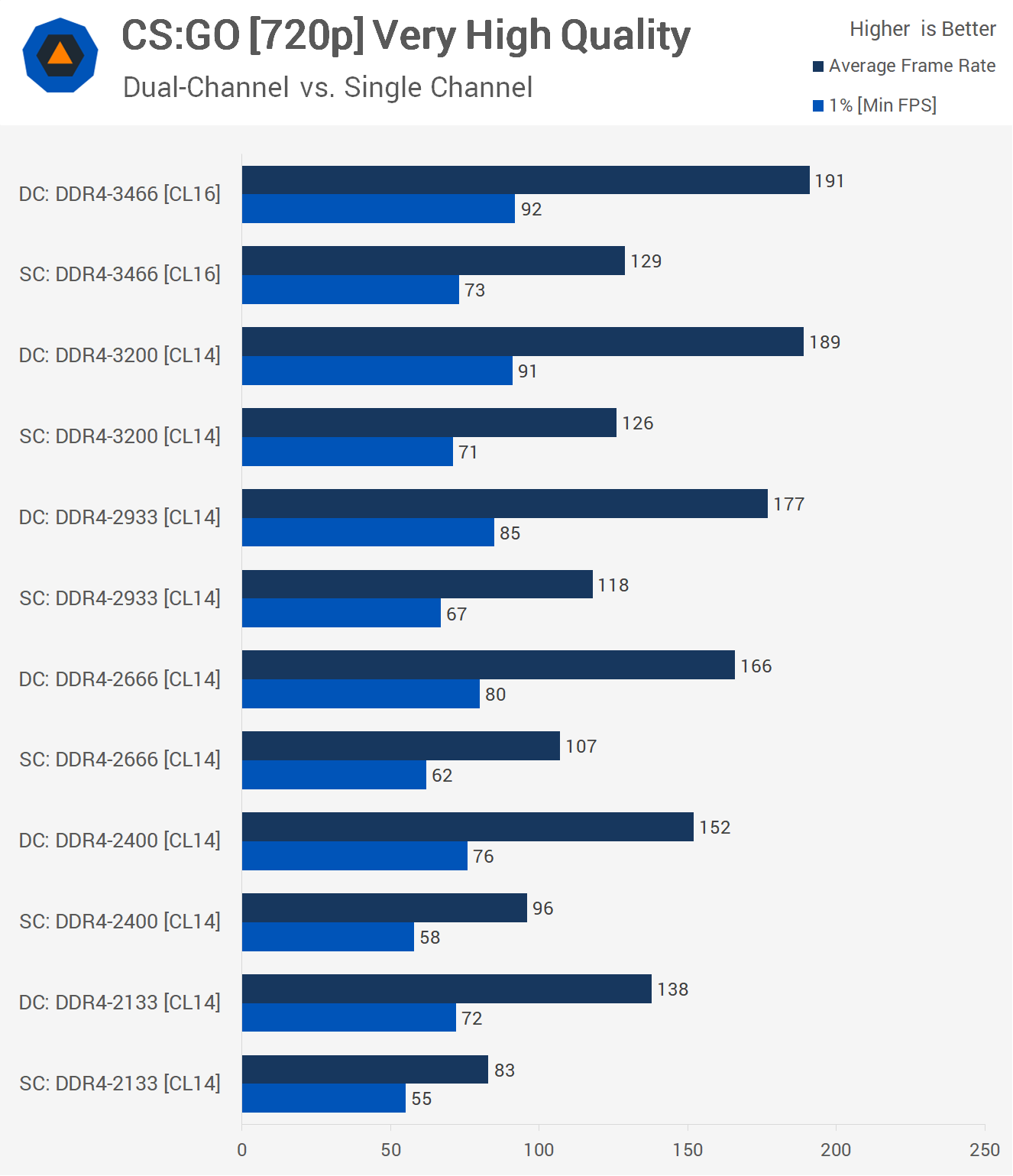- Joined
- Sep 2, 2011
- Messages
- 702 (0.14/day)
- Location
- Where the hand of man has never set foot
| Processor | AMD Ryzen 5 3600X |
|---|---|
| Motherboard | ASUS TUF GAMING X570-PLUS |
| Cooling | Noctua NH-D15 SE-AM4 |
| Memory | 2x8GB G.SKILL Ripjaws V DDR4-3200MHz CL16 1.35V |
| Video Card(s) | MSI Radeon RX 6600 XT Gaming X 8G |
| Storage | Crucial MX100 512GB + Samsung 870 EVO 2TB |
| Display(s) | MSI Optix MAG24C |
| Power Supply | Seasonic FOCUS GX-550 |
| Mouse | Razer Viper Ultimate |
| Keyboard | Corsair K60 |
After seeing reviews of Ryzen APUs (which are limited by memory bandwith (IGP wise)), I asked myself why isn't quad-channel standard? Only X399 and LGA2011 supports it.
Quad-channel supports triple and dual-channel so wouldn't everybody benefits from it?
With current memory prices, people could buy 4 sticks of 2400MHz instead of 2 of 3200MHz and save some money.
Even at 3200MHz the IGP is still bottlenecked by RAM speed so when RAM prices go down (if they do) people could get 4 sticks of 3200MHz and net some gains.
TechSpot compared dual-channel and single channel and the benefits are humongous (as expected).
Would the implementation of quad-channel be too expensive? What are your thoughts?

TechSpot link: https://www.techspot.com/review/1574-amd-ryzen-5-2400g-and-ryzen-3-2200g/page8.html
Quad-channel supports triple and dual-channel so wouldn't everybody benefits from it?
With current memory prices, people could buy 4 sticks of 2400MHz instead of 2 of 3200MHz and save some money.
Even at 3200MHz the IGP is still bottlenecked by RAM speed so when RAM prices go down (if they do) people could get 4 sticks of 3200MHz and net some gains.
TechSpot compared dual-channel and single channel and the benefits are humongous (as expected).
Would the implementation of quad-channel be too expensive? What are your thoughts?

TechSpot link: https://www.techspot.com/review/1574-amd-ryzen-5-2400g-and-ryzen-3-2200g/page8.html



